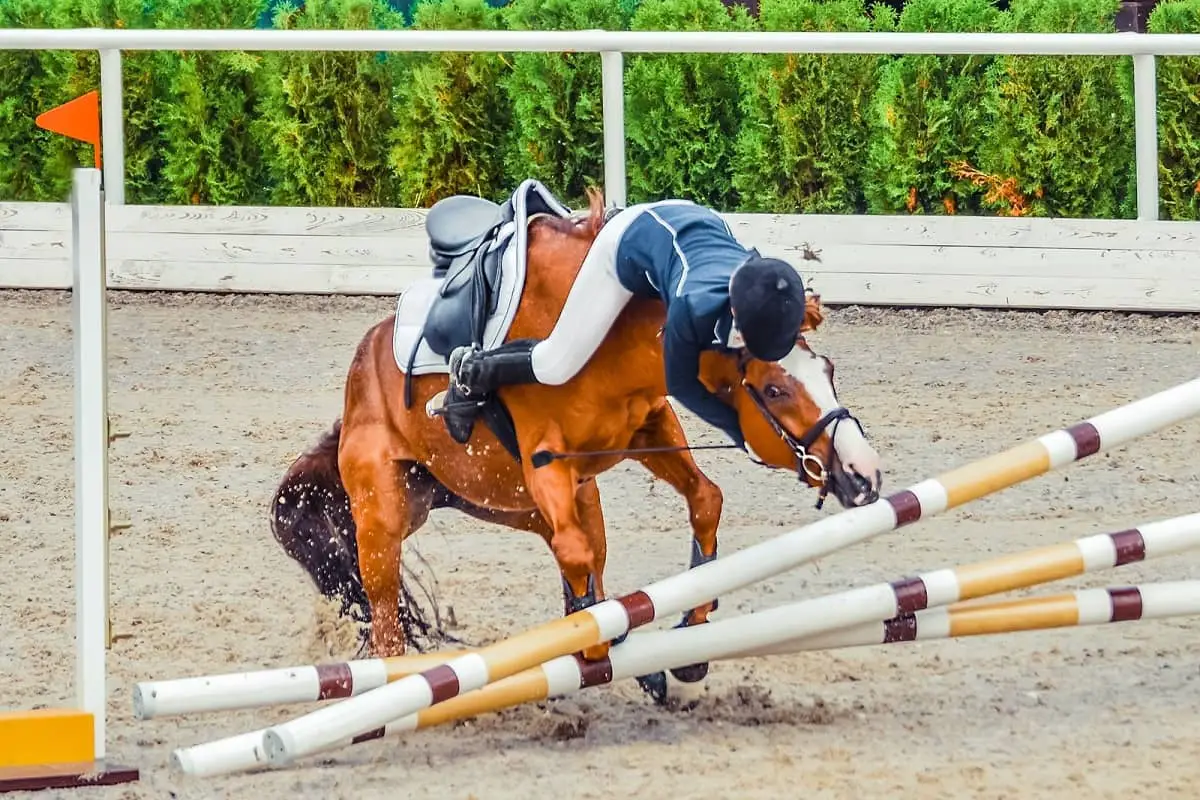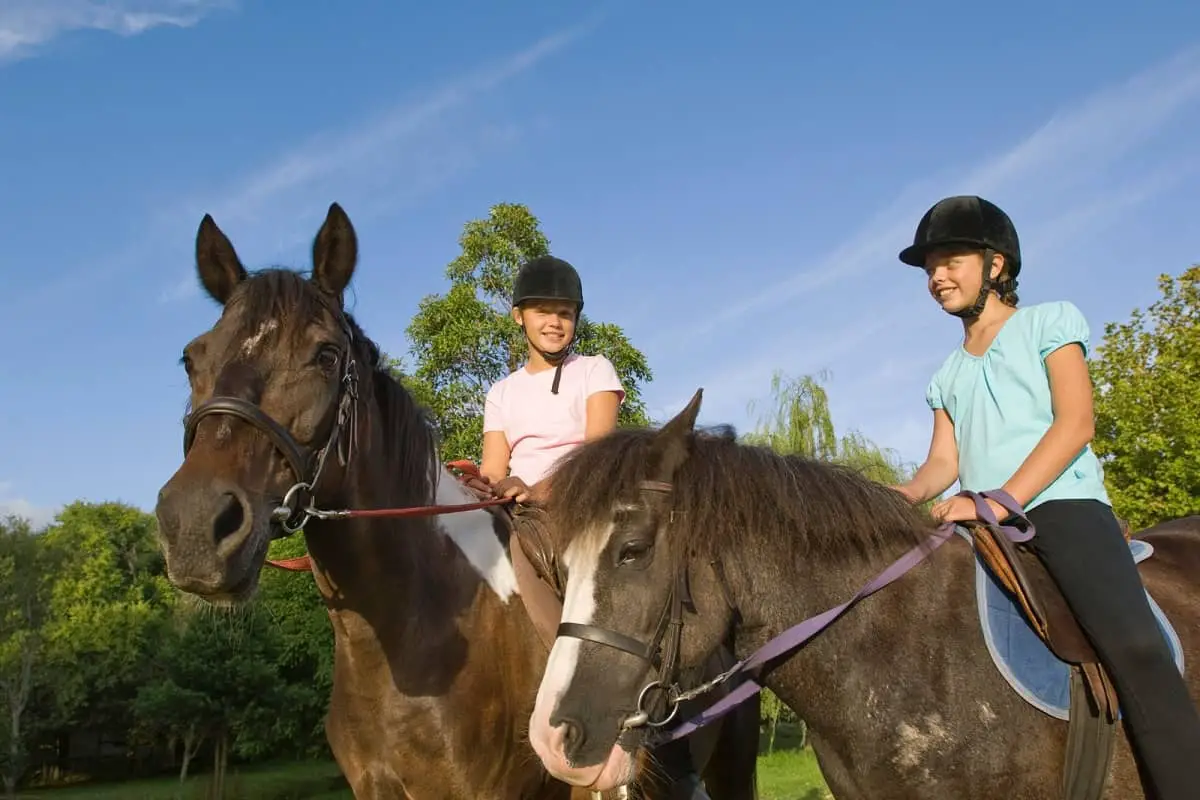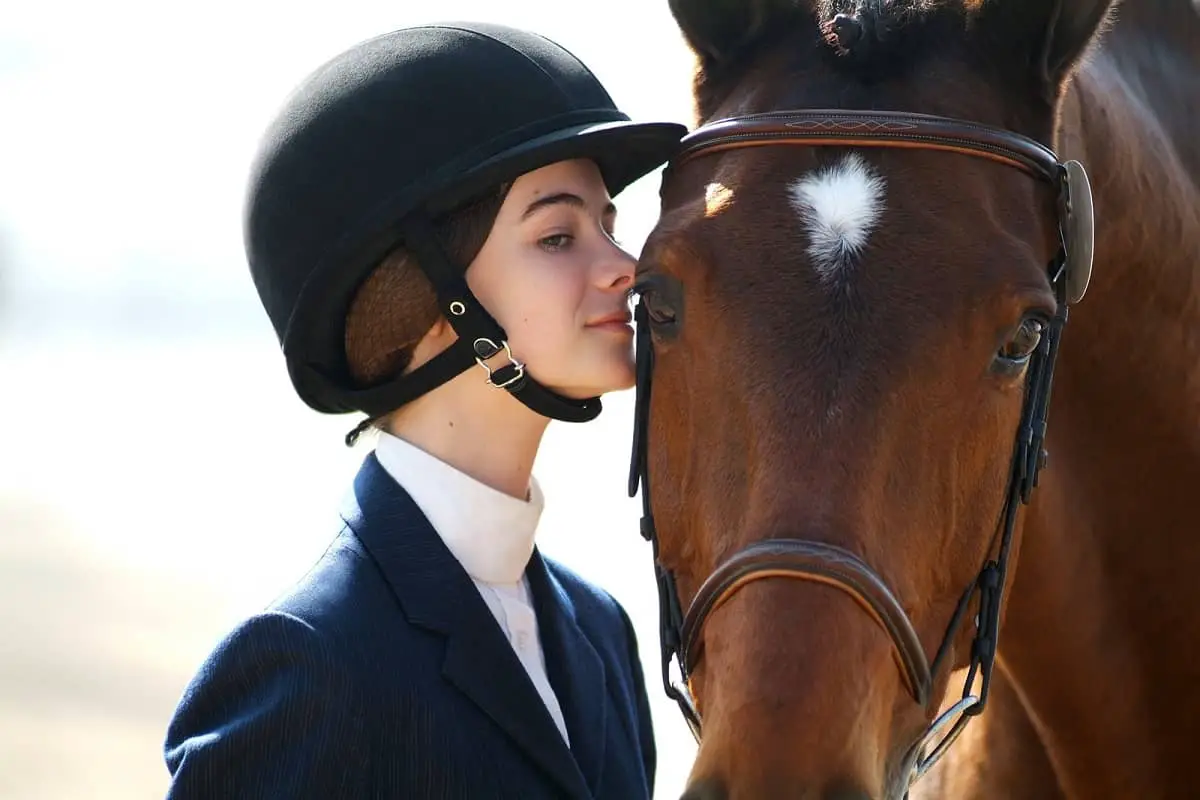Do I Need To Wear A Helmet When Horseback Riding?
I have to admit, I was surprised to hear that wearing a helmet while horseback riding was somewhat of a controversial subject. I really can’t understand that.
As a past rider and the parent of two “horse kids” who ride regularly, I can’t even imagine not wearing a helmet while riding.
I suppose everyone has their own opinion, but for me, the reasons are clear on why you should wear a helmet when riding a horse.
Page Content

Disclosure: As an Avantlink and Amazon Associate, we earn from qualifying purchases. Disclosure Statement.
Do Helmets Actually Work?
Yes, yes, and yes. Before I get started, I can tell you a personal story that happened to a friend of mine.
His daughter was riding her horse and was thrown off. She landed directly on her head. Her riding helmet saved her life. She could have been severely brain-damaged if not for that helmet.
If you are still unsure as to whether helmets work, you may want to consider that the most frequent cause of death or serious injury while horse riding is head injuries. This includes not only being on the horse but off her as well.
RELATED: Horse Riding Helmets for Kids
That is very scary, especially when you consider that death or injury is easily prevented by wearing a helmet. Just like death was prevented in the case of my friend’s daughter.
How Does a Helmet Protect Your Head?
Plain and straightforward, helmets protect your head and brain by deflecting and absorbing the impact of a collision. The padding in the helmet, along with the hard outer shell, acts as a barrier between your head and the place of impact (usually the ground).
It also absorbs the shock from impact by dispersing the force over a wider area instead of it being concentrated in one place. By doing this, the helmet reduces the amount of impact energy reaching the skull.
Helmets are also designed to withstand the penetration of hard objects too, such as a tree branch, a rock or even a shod hoof. However, to work properly, your helmet much be fitted correctly, and the chin strap should be fastened properly.

What Are Riding Helmets Made of?
When you think of early English riders, their helmets were referred to as a riding hat and were covered with felt. It almost looked like the riding hat was more about looking the part rather than for protecting the rider’s head.
Today’s helmets are more about safety, as the outer casing is usually made from tough ABS (Acrylonitrile Butadiene Styrene ) plastic, fiberglass or even kevlar. The inner part of the helmet is lined with EPS (Expanded Polystyrene) foam, a material with energy-absorbing properties, which is then covered with polyester padding that sits comfortably against the head.
Should I Replace My Helmet if I Fall?
If your helmet is involved in a fall, it is highly recommended that the helmet be replaced. The good news is that many manufacturer’s will replace your helmet free of charge or at a discount. You need to check the manufacturer’s guarantee details before you buy your helmet to be sure how long the guarantee is valid.
This content was originally published on headsdontbounce.com. If it appears on another website, it is a violation of the copyright owned by headsdontbounce.com.
That is what happened with my friend’s daughter. The helmet she was wearing saved her life, but it also cracked on impact. The manufacturer sent them a new helmet right away.
RECOMMENDED: Horse Riding Helmets For Toddlers
Sometimes, it can be hard to see a crack in a helmet, so it should be replaced after any fall to avoid the risk of becoming another statistic.
How Do I Know I Am Choosing the Right Helmet?
The right helmet is the one that fits your head correctly. To be sure you are getting the proper fit, you need to measure your head. Knowing what size helmet you need is essential before buying a helmet.
A helmet fits correctly if it sits snugly and covers your entire skull and you feel even pressure all around your head. The helmet should never wobble up or down, or left to right. Also, make sure the brim sits about two inches above your eyebrows.
Once you are satisfied with how it rests on your head, you will need to adjust the chin strap. It should fit comfortably, yet snugly, under your chin and keep the helmet in place. If you have it too tight, you will notice the discomfort almost immediately.

What About Borrowing a Helmet?
Often, if you go on a trail ride, the trail company will provide an equestrian helmet for you. You can certainly use these, but again, you need to be sure that it fits your head snugly or it may not be safe in a fall.
Go through the same process you would if you were trying one on in the tack shop until you get one that fits accordingly. You’ll also want to be sure that the helmet has not suffered any impacts, as it should not be used if it has.
IMPORTANT: How to Know Your Helmet Size
Carefully check the helmet shell for small cracks or chips, and check the chin strap for frays. You should give the chin strap a tug to ensure that it won’t fail during an impact.
What Are the Laws?
In the United States, there is no federally mandated standard for equestrian helmets. However, there is ASTM F1163-15, ‘Standard Specification for Protective Headgear Used in Horse Sports and Horseback Riding’, which is a voluntary standard.
This means that when looking to purchase a horse riding helmet in the United States you should choose a helmet that meets the standards set by ASTM F1163-15 to ensure that your helmet will protect you in the event of a fall.
Related Reads:
